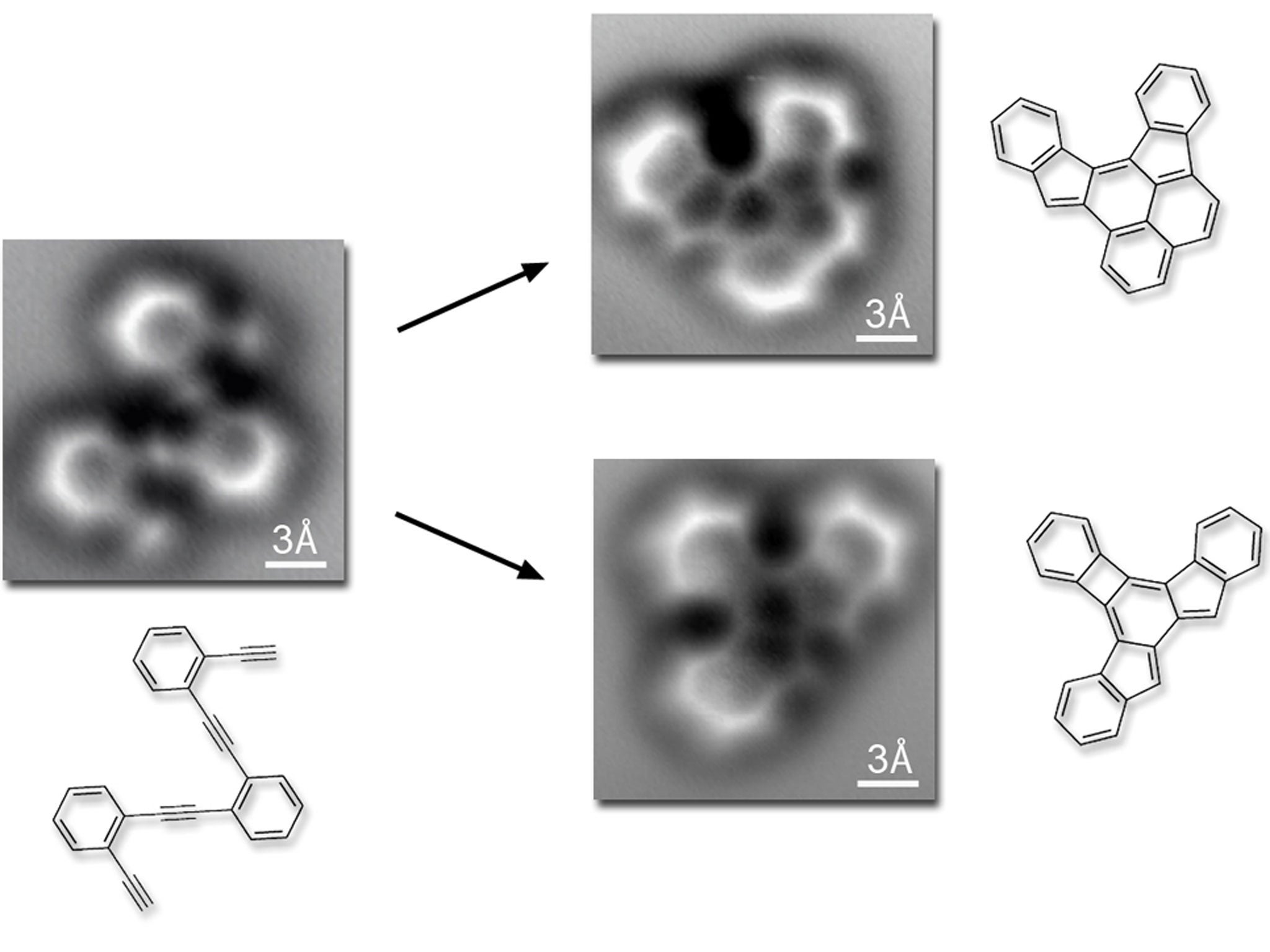'Groundbreaking': Scientists capture unseen images of rearranging molecular bonds
Scientists using atomic force microscopy unintentionally capture the images

Scientists have for the first time captured images of a molecule rearranging its bonds at a single-atom resolution, a structure that up until now had only been inferred.
“Even though I use these molecules on a day to day basis, actually being able to see these pictures blew me away,” said Felix Fischer, the lead researcher behind the experiments. “This was what my teachers used to say that you would never be able to actually see, and now we have it here.”
The new pictures emerged from the Lawrence Berkeley National Laboratory in California, where scientists were carrying out experiments on carbon atoms to produce different molecules. Technicians were using a method known as atomic force microscopy to check on the experiment, and in doing so unintentionally captured the first images of atomic bond.
Atomic force microscopy works by reading the electrical forces produced by molecules using a single, super-fine point. This allowed the team to visualize the bonds between atoms by measuring the electrical forces created by shared electrons.
The results stunned the researchers, especially for their near text-book appearance, with the bonds’ honeycomb layout remarkably similar to the stick-diagrams used to illustrate atomic bonds in classrooms.
This new ability to image molecular reactions will help scientists studying chemical structures and help them fine-tune reactions to achieve the results they want. These particular images were captured during the construction of new graphene nanostructures – an area of research with many possibilities in computing and manufacturing.
“However, the implications go far beyond just graphene,” said Fischer. “This technique is unique out there right now for the accuracy with which it gives you structural information. I think it’s groundbreaking.”
Join our commenting forum
Join thought-provoking conversations, follow other Independent readers and see their replies
Comments
Bookmark popover
Removed from bookmarks